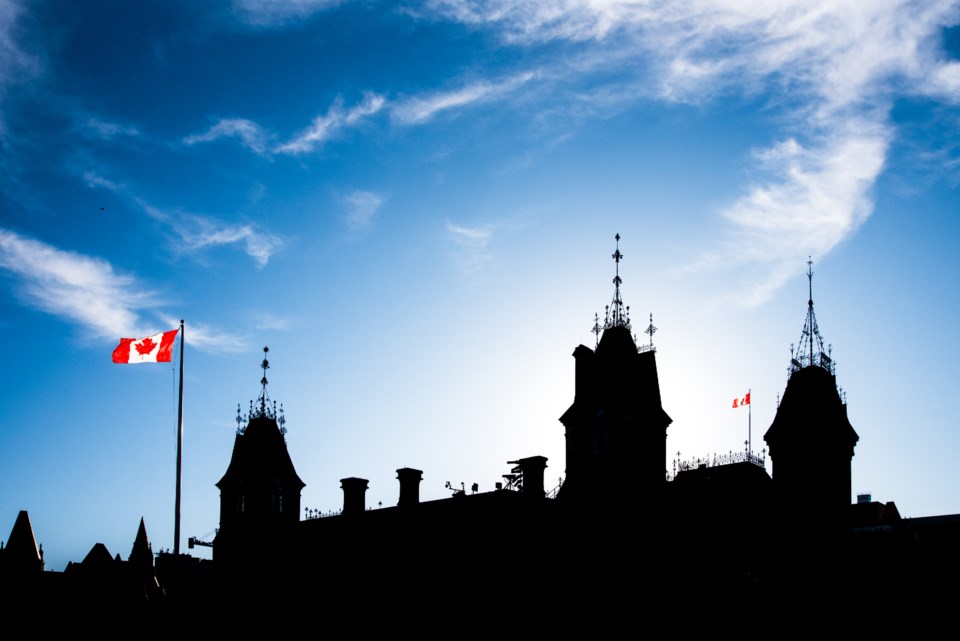The “freedom convoy” protests across the country revealed that many Canadians are angry at government and have a growing distrust of some democratic institutions. Even though the protesters’ actions may not represent how a majority of Canadians feel about vaccine mandates, there’s reason to believe their negative views about government are not unique.
asked respondents if Canada could be accurately described as having a “good system of government” — 45 per cent said it could not. The poll also found no region of the country had a majority of residents who felt the federal government cared about issues important to them.
None of this is surprising in a country where and .
A common refrain from politicians is that Canada is a democracy where everyone is entitled to vote, so if you don’t like what the government is doing, then you can vote it out of office. Implicit in that response is that everyone enjoys an equal opportunity to determine who forms government. But the refrain is also at odds with our current democratic process.
For quite some time, what’s united a majority of Canadians is that they don’t like the vision of the government in power, no matter what their political colours are. What’s needed to release tensions of growing divisions is a recalibration of our basic democratic institution.
Canada has had 12 elections since 1984, when the Progressive Conservatives under Brian Mulroney were the last party to enjoy the support of a majority of voters.
— most times in excess of 60 per cent — have not supported the government in power. What voters can’t agree upon is whose vision they prefer.
These figures have not been lost on the country’s political leaders. They have given up on seeking a true majority of voters and have designed their policies — often in very cynical fashion, such or — to appeal only to what they consider their electoral base, believing this base can give them a shot at forming government.
Conservative leadership candidate is the latest example of the “appeal to your base” strategy. It’s not the number of people you can attract to your party. It’s more important to focus on which electorate voters reside in.
For example, I live in the electoral riding of Windsor West. Herb Gray held the riding for the Liberal party from 1962 to 2002 — sometimes with 73 per cent of the popular vote, but most times around the 55 per cent mark. , Brian Masse was elected for the NDP with 42 per cent and . In my riding, if you are a Conservative or Green voter, you may as well stay at home.
In the 12 federal elections held over the last 37 years, five resulted in minority governments. Obviously, we are not experiencing the electoral stability that supporters of have always argued as a strength of the current electoral process.
How then do we recalibrate our basic democratic system to ensure that everyone’s vote counts, that political leaders are incentivized to court every voter and construct policy aligned with that goal, and to ensure those who feel alienated are heard?
The answer lies in moving to some form of proportional representational electoral system. This idea is not new, but now more than ever it is necessary to revitalize our democracy and provide a pathway for unity.
Among those alternative systems, has many advantages.
Canadians can’t leave electoral reform to mainstream politicians — . New Zealand’s system would require changes to be suitable for Canada, but some form of proportional representation is the best way to ensure that every vote counts and that we do truly get the government we deserve.
In New Zealand, everyone has two votes — one for the candidate to represent their riding and one for the party of their choice. Riding candidates are elected on the basis of first past the post, but the composition of the parliament is also based on the popular vote share across the country. So if a party gets 35 per cent of the popular vote, but holds only 25 per cent of the seats in parliament, it’s allotted extra seats that are drawn from a list of candidates put forward by their party.
There are currently 75 electorate members and 45 list members in New Zealand. These lists have widened the diversity of candidates, providing an additional strength to a representative democracy. (Maori make up 15 per cent of the population) and Pacific Islanders (seven per cent of the population) to seven per cent from one per cent. Gender parity has largely been obtained ().
In practice, . There have been true minority governments where a party has gained only 42 per cent of the popular vote and has held government with 45 per cent of the seats. There have been true majority governments — the .
But more often, there have been where parties have agreed on particular policy items, including holding ministerial portfolios, signed an accord and have governed accordingly. Their legitimacy comes from the fact that in coalition they represent a true majority of the voters.
Most New Zealand voters use their two votes for the same party but does occur.
If this system was brought to Canada, I might want to vote NDP for my riding MP, but give more say to the Green party because I believe strongly in climate change and that’s where I would give my party vote. For a Conservative voter in Windsor West, under a proportional voting system, their party vote has the same value as everyone else in the country. That would dissuade parties from only appealing to their “base” with policies that alienate the majority of the electorate.
![]()
Jeff Berryman does not work for, consult, own shares in or receive funding from any company or organization that would benefit from this article, and has disclosed no relevant affiliations beyond their academic appointment.




